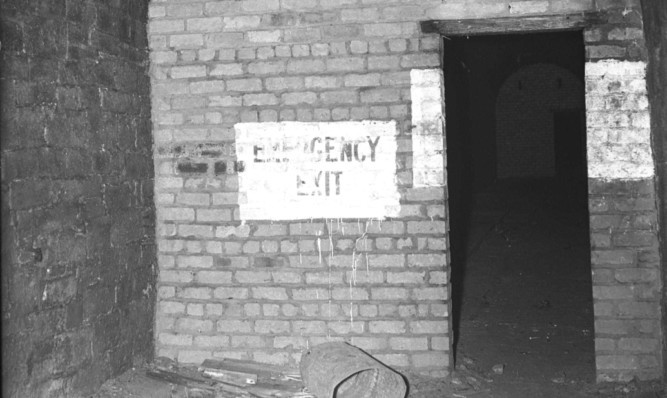Plans to clear toxic air from the Law tunnel could remove one of the major obstacles to reopening the historic site to the public.
A new vent is to be installed to reduce dangerous levels of CO2 which are currently trapped in the tunnel.
Inspectors from Highways Historical Railways Estate, which owns and maintains the now unused former railway, periodically check the integrity of the tunnel.
With only one access point, under a manhole in someone’s garden, it is difficult to flush clean air inside the tunnel which was used as a rubbish dump in the past.
This latest work has been hailed a huge step forward in the community aspiration to see the tunnel reopened.
Deirdre Robertson, who is heavily involved in the Law tunnel project, said this latest move was great news and while it took things a step closer towards one goal of opening the tunnel as a tourist attraction “it was by no means a done deal yet.”
She said: “This is all really good news. The fact the tunnel is in such wonderful condition is fantastic news but we are experienced enough in managing large scale complex capital projects to not underestimate the many issues that still need to be overcome.”
“We are still at the feasibility stage with the capital development side of our plans and there are still a lot of big ifs but this development comes at such a critical time strategically for the city, that we have a responsibility to give it our best shot.
“If we explored all options and only end up with a great archival record so people would be able to see what’s inside I would be happy with that.
“So many people want to see it opened though. The tunnel’s place in the city’s history is so significant.”
She said the Highways Historical Railways Estate was very open to working with the project and the tunnel could be transferred to the city with a legacy fund to maintain it.
Fiona Smith of the Highways Historical Railways Estate also said the new work was highly significant.
She said: “At the moment we are struggling to get our guys in because of the poor air quality. You’d have to go in with breathing apparatus.
“The vent pipe is really just to see if we can improve the air quality. We’re hopeful it will work and now we have approval we should be able to start work next month.”
If the tunnel were ever to be reopened the next hurdle would be improving access to make it safe for public use.
Ms Smith added: “We have no plans to reopen it to the public but if there was public and council interest to have it reopened we could look at transferring ownership to the council.”
‘PEOPLE IN DUNDEE ARE FASCINATED’
Reopening the Law tunnel is “not outwith the realms of possibility”, according to a city archivist.
Assistant archivist Martin Allan has given talks on the history of the Law and the tunnel underneath and while he said there are “major hurdles” to be overcome he wouldn’t rule out future public access.
The tunnel was officially opened in 1831 and served one of the first passenger trains in Scotland.
It stopped operating as a railway in the 1860s, but it remained open until the early ’80s, serving as a mushroom farm briefly in the 1890s and as a bomb shelter in the 1940s.
Mr Allan said the major hurdle, besides the poor air, was access as both entrances have been closed and houses built on top in the early ’80s, leaving the only remaining access point 20 to 30 meters down a manhole in someone’s garden.
When it came to reopening the tunnel, Mr Allan said: “It’s a nice idea. People in Dundee are fascinated by anything secret or underground and it is such a shame that something so important to Dundee and Scotland’s railway heritage is stuck underground.
“Unless the tunnel is opened up at either end it would be a lot of work to put an access shaft in.”
